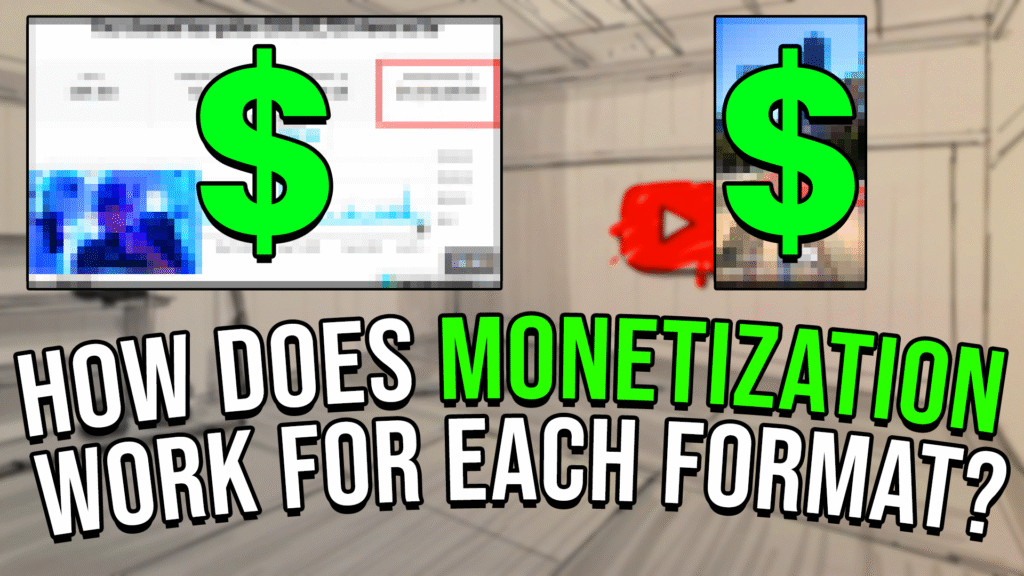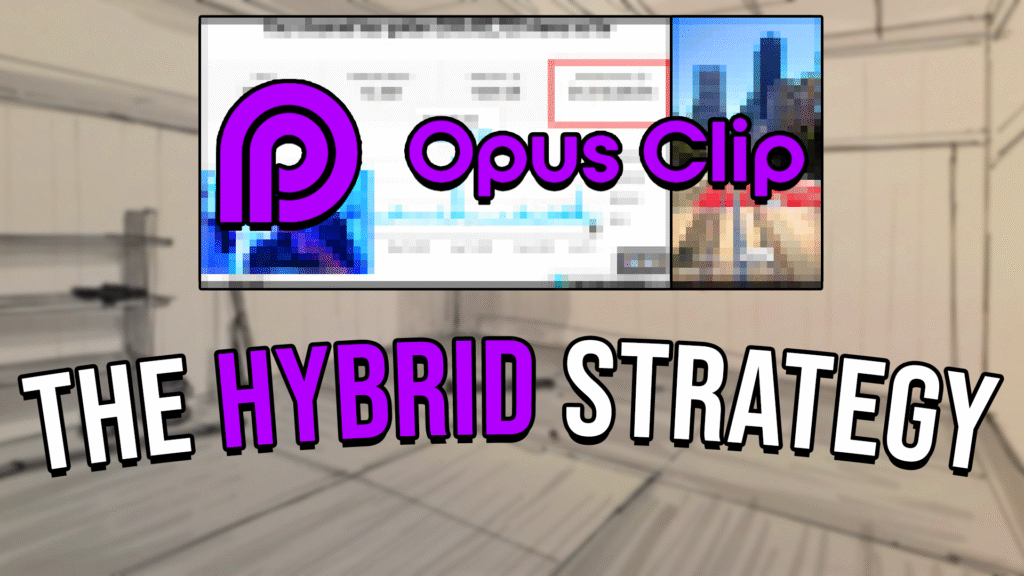Knowing the difference between YouTube Shorts and long-form videos is essential for anyone in the YouTube Automation space. Understanding how each format works is the key to building a channel that doesn’t just get views, but actually makes money.
Are you building a channel for quick views or for high-profit margins? Do you want an audience that scrolls past or one that invests time in your content? The format you choose dictates the answer.
The main difference is simple: Shorts get views easily but pay very little. Long-form videos are harder to grow but are far more profitable. Shorts are like flyers for your business. They’re cheap to make and great for getting attention. Long-form videos are your actual product—where you build trust and generate real income. Tools like OpusClip can automatically turn one long-form video into many Shorts, making it easier to use both.
What Is the Difference in How Viewers Find Your Content?

For Shorts, discovery is mostly passive. Viewers find your content by scrolling through the Shorts feed. The algorithm tests your video with a small audience. If that group watches instead of swiping away, it gets pushed to a wider audience, and the cycle continues. The viewer isn’t actively looking for your video.
For long-form videos, discovery is active. Viewers find your videos by searching for a specific topic or by clicking on a thumbnail that appears on their homepage. They make a conscious decision to watch based on the title and thumbnail. They are looking for a solution or entertainment and have chosen your video to provide it.
How Does Monetization Work for Each Format?

YouTube Shorts Monetization
Shorts are monetized through the YouTube Shorts Fund. This is a large pool of money that is distributed to creators based on their share of the total views on the platform. Because you are splitting the pot with every other Shorts creator, the payout is very low. The average Revenue Per Mille (RPM), or what you earn per 1,000 views, is typically between $0.04 and $0.20.
YouTube Long-Form Monetization
Long-form videos are monetized through direct ad placements. These are the pre-roll, mid-roll, and post-roll ads you see on videos. If your video is over eight minutes long, you can place multiple mid-roll ads, which significantly increases your earning potential. The RPM for long-form content is much higher, usually ranging from $3 to $8, and can be even higher in valuable niches like finance or technology.
What Is the Strategic Purpose of Each Format?
The Purpose of a Short
Think of a Short as an advertisement. Its job is to create new entry points to your channel. Shorts are designed for maximum reach and discoverability. They are quick, attention-grabbing clips that act as marketing for your brand, introducing a wide audience to your content style and topics. They’re also a great way to gain subscribers for monetization, especially if you already have those watch hours.
The Purpose of a Long-Form Video
A long-form video is your product. Its job is to deliver deep value, build trust with your audience, and turn casual viewers into loyal subscribers. This is where you establish authority and create the content that forms the foundation of your business.
The Best Workflow: The Pillar and Satellite Model
The most efficient way to run a YouTube Automation channel is to use the Pillar and Satellite model.
- Pillar Content: Your pillar is one high-quality, well-researched long-form video. This is your main asset and your primary source of income. You should aim to produce one pillar video per week.
- Satellite Content: Your satellites are the 5-10 YouTube Shorts you create from that single pillar video. These are your marketing assets. You can use AI tools like OpusClip to automatically find the most viral-worthy clips from your long video, add captions, and format them as Shorts.
This model maximizes the return on your most significant investment (the long-form video) by using low-cost automation to market it.
The Hybrid Strategy: Making Shorts and Long-Form Work Together

The best strategy isn’t to choose one format over the other; it’s to make them work together. Use your Shorts as a marketing funnel that drives viewers to your profitable long-form content. The easiest way to do this is with OpusClip.
1. Link Every Short to Your Pillar Video
When you upload a Short, use the “related video” feature to add a clickable link to your most recent long-form video. This creates a direct bridge, allowing you to convert low-value views on a Short into high-value watch time on a long-form video.
2. Keep Your Audience Consistent
Ensure the topics of your Shorts are directly related to your long-form content. If you gain a subscriber from a funny meme Short, that subscriber is unlikely to watch your serious videos about financial planning. A mismatched audience will hurt your channel’s performance because YouTube will stop showing your long-form content to them when they don’t click.
3. Maintain a Balanced Schedule
Publish one long-form “pillar” video each week. Then, publish one repurposed “satellite” Short every day. This gives the algorithm a consistent stream of content to promote while you focus on building valuable, long-term assets.
Conclusion: Your Action Plan
Success on YouTube, especially with automation, comes from building an efficient, data-driven system. Don’t think of it as Shorts vs. Long-Form. Instead, build a system where they work together.
- Focus on One Weekly Pillar Video: This is your product. Invest in its quality.
- Automate Your Satellite Shorts: Use tools to create low-cost marketing from your pillar video.
- Systematically Link Everything: Connect your marketing (Shorts) to your product (long-form).
- Analyze the Data: Pay attention to which Shorts drive the most clicks to your related video. This tells you what hooks your audience. Double down on what works.
Frequently Asked Questions
Can I have a successful channel with only YouTube Shorts?
While you can gain a lot of views and subscribers with a Shorts-only channel, it is very difficult to make it financially successful. The revenue from Shorts is extremely low. To earn a significant income, you would need billions of views. A strategy that includes long-form videos is far more profitable.
Will a viral Short make my long-form videos go viral?
No, not directly. The algorithms for Shorts and long-form videos are largely separate. A viral Short will not automatically cause YouTube to promote your other videos. The only way to translate Shorts success into long-form views is to manually link them using the “related video” feature, guiding viewers from one format to the other.
Which is a better way to get monetized: 4,000 watch hours or 10 million Shorts views?
For building a sustainable business, the 4,000 watch hours path is better. It’s a slower process, but it builds a foundation of viewers who are genuinely interested in your long-form content and are more likely to become loyal subscribers. The 10 million Shorts views path can be faster, but it’s a very high target and often brings in less-engaged viewers.
What is the biggest mistake creators make when mixing Shorts and long-form videos?
The biggest mistake is audience mismatch. This happens when you create Shorts on topics or in a style that is completely different from your long-form content (e.g., a meme Short for a serious finance channel). You may gain subscribers from the Short, but they won’t watch your main videos. This signals to the algorithm that your long-form content is not engaging, which can harm your channel’s growth.
